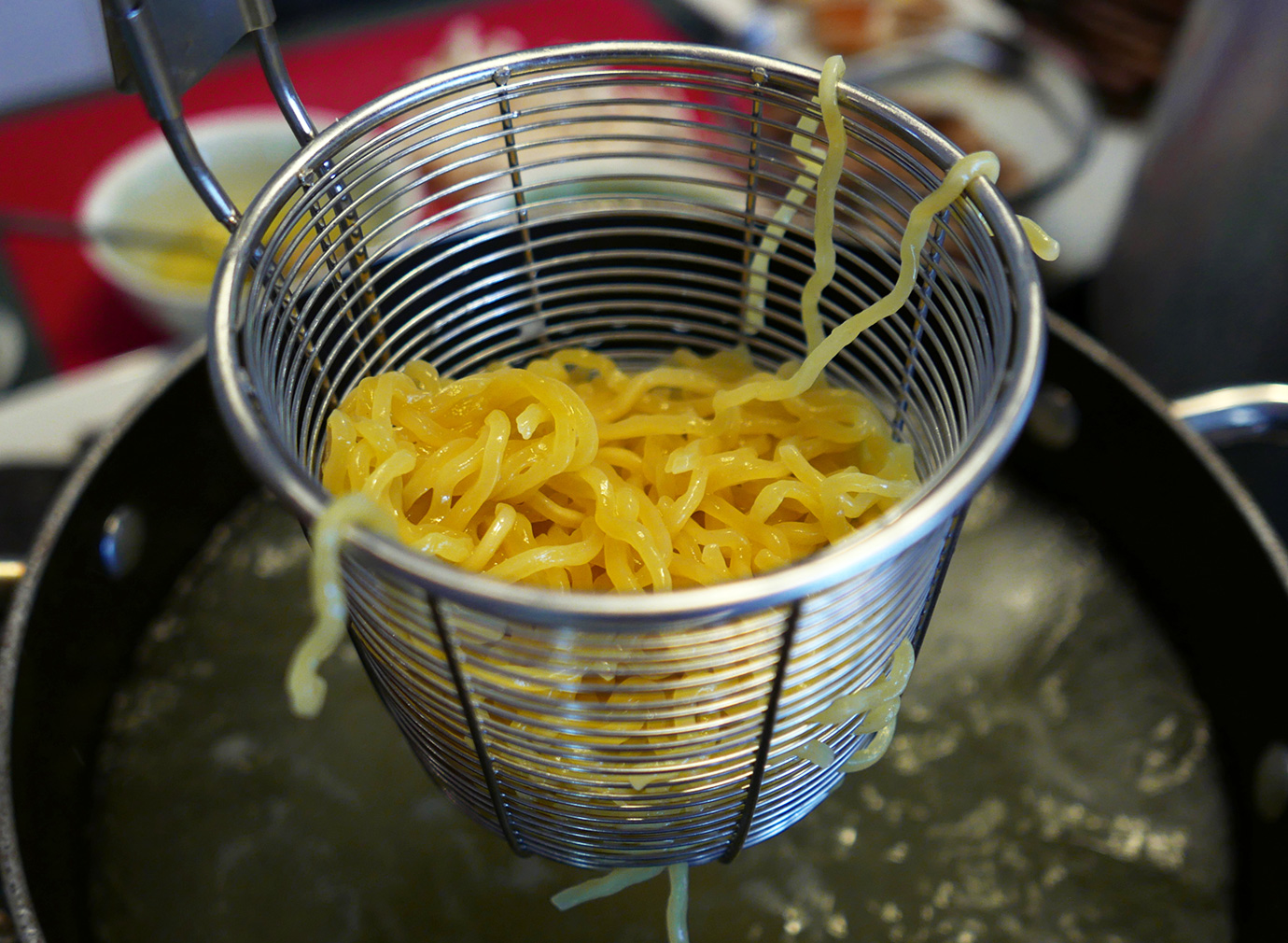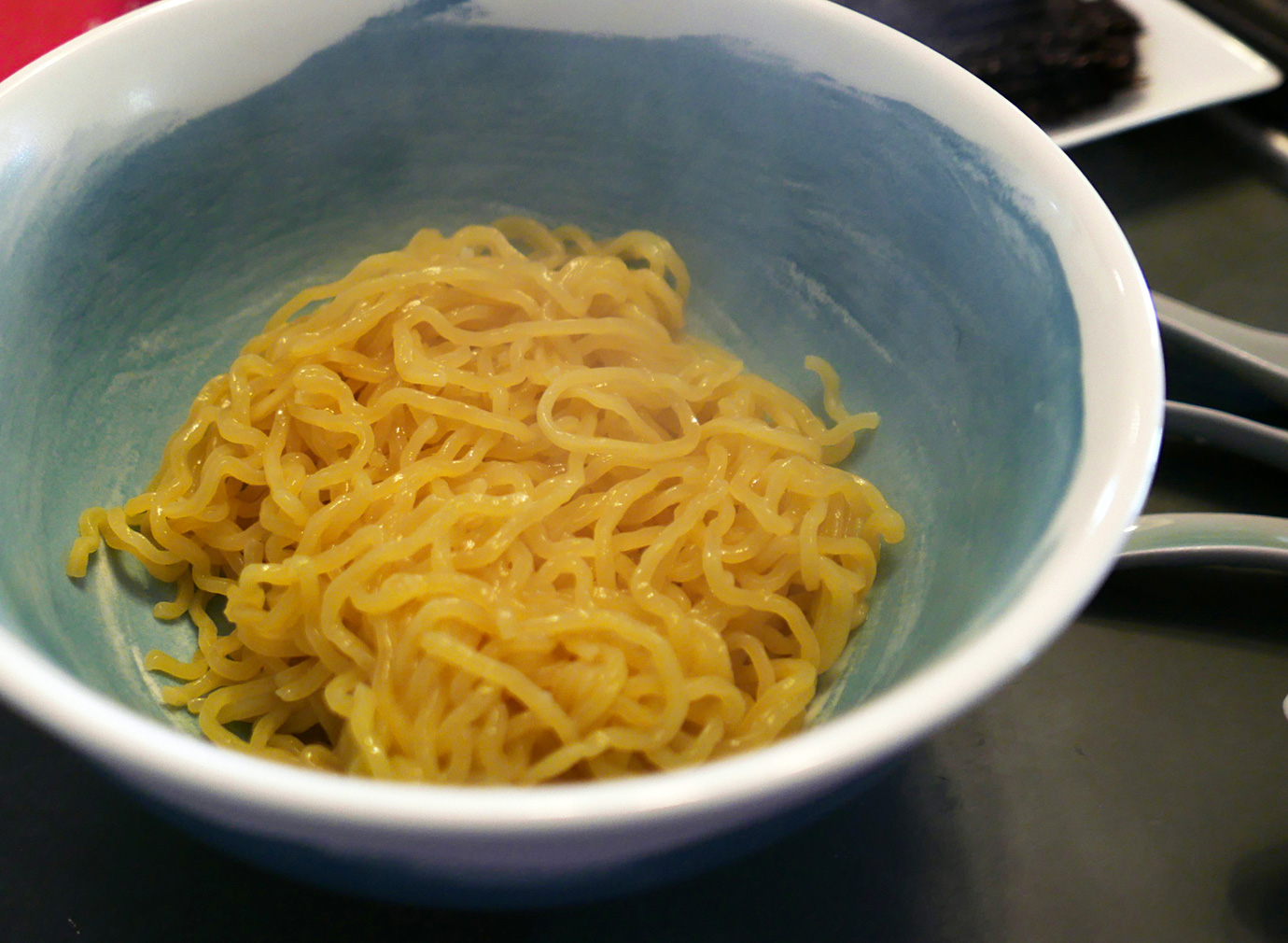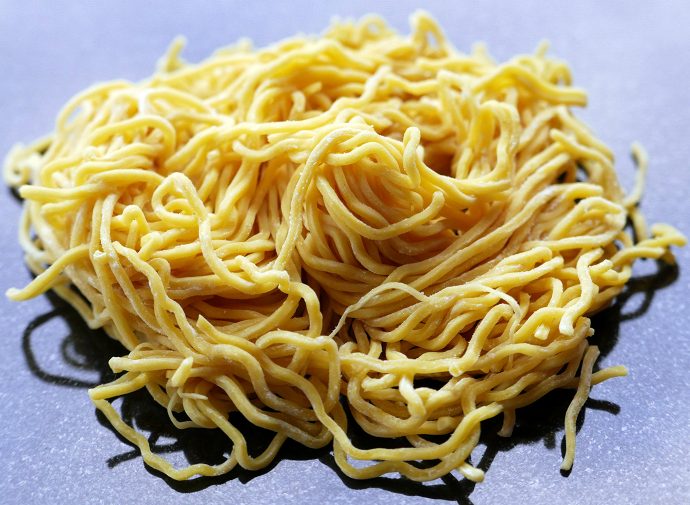Ramen noodles are the chewy, slippery, and bouncy medium driving along that mouth-watering, tongue-coating broth. These noodles differ from pasta by being made from a much drier dough (less water and no eggs), plus the additions of kansui and riboflavin. Kansui is an alkali solution made with water plus sodium bicarbonate, potassium bicarbonate, or both. Riboflavin helps accentuate the naturally yellow color started by the alkaline mixture’s reaction with flour. Noodle size variations do exist. Tokyo and Hakata style noodles tend to be thin, Kitakata and Tsukemen thick, while Sapporo and Jiro noodle styles exist somewhere in between.

The noodles we have come to know as ramen possibly started as an evolution of hand pulled lamian noodles from China. In the early 1900’s, Japanese vendors began selling these noodles at ports to the working class, and they really took off with American wheat aid after World War II. In the late 1950’s, flash frying allowed the noodles to be preserved and shipped around the world.

Good noodles require a lot of precision measurement and careful attention to aspects like moisture content and water hardness. I cannot pretend to be the pasta artist or chemist required to make good ramen noodles, especially as such excellent ones are already available commercially and can be prepared in minutes. If one is ready for the challenge, Mike Satinover, known as “The Ramen_Lord,” has produced about twenty-five pages on how to make these noodles, as well as the science behind it. However, this is one shortcut that I am willing to take, but please just don’t reach for the instant ramen packs unless having ramen withdrawals. Good alternatives come from the freezer section, better ones come from Asian markets, and if you want the best, look no further than Sun Noodle, which is now delivering to just about anywhere in the States.

